Concealing oneself is pretty simple when we have a full set of advanced region-specific camouflage clothing to wear. Modern technology has made it very simple to blend into the environment and virtually disappear from view.
What happens when we are thrust into a survival situation and need to hide without our camouflage clothing? Or if we need to make our way across terrain unseen? What about hunting in a survival situation?
Survival situations have a nasty habit of sneaking up on us when we least expect them. Sometimes, we will need to conceal ourselves without any preparation or warning from humans or animals.
Fortunately, all you need is a bit of knowledge and some creativity to do a lot to blend into the environment.
Why Are Things Seen?
Our camouflage lessons in the army started with a rundown of why things are seen. This formed the foundation of our ability to camouflage ourselves.
Related: 3 Non-Lethal Booby Traps From An Army Vet
Colour – Colour is probably the most obvious of the reasons that things are seen. Greens, browns, tans, greys, and in the winter, whites are the colours that you will find most often in nature. If you want to blend in without wearing a camouflage pattern, choosing clothing that consists of earth tones is the way to go. At the least, have some form of earth-toned clothing to wear over the top of the brighter coloured clothes that you may be wearing.
Shape/Silhouette – Nothing in nature looks like a human being. We tend to stand out while in the woods, especially when silhouetted against the sky. The camouflage goal is to break up the outline of a human being attempting to make us look like anything but a human. When moving about, be very mindful of where you are walking and not allow yourself to silhouette against the sky.
Texture – Nature has textures, and there are not many things that are smooth like our clothing. Even our skin is out of place in the bush.
Shine – Humans love shiny objects, and many things give off a shine that we may not be immediately aware of. Glasses, watch bands, watch faces, rings, and smartphones, to name a few, all have reflective surfaces that can catch the light and betray our location. Our skin is also quite shiny and oily, which stands out against nature’s colours.
Shadow – If you hide behind a tree or bush, the sun can still cast your shadow on the ground in such a way that it is visible to those who can not see you directly. Shadows also can be a great place to hide because they are darker than the surrounding area.
What’s More
Sound – Making noise is probably one of the more common ways that people betray their location. Sounds immediately capture our attention, and where our ears hear the noise, our eyes follow. Stay as quiet as possible.
Movement – Any camouflage works best if you stay still. Animals and humans alike are hardwired to spot movement, so the best thing you can do is remain still while someone is looking in your direction. Any movements you do make should be slow and deliberate, not rushed and haphazard.
Wear the Right Colors
No amount of natural camouflage will effectively cover up the bright colours that so many of us like to wear. Being prepared means that we consider all possibilities and probably dress in muted and earthly tone colours more often than not.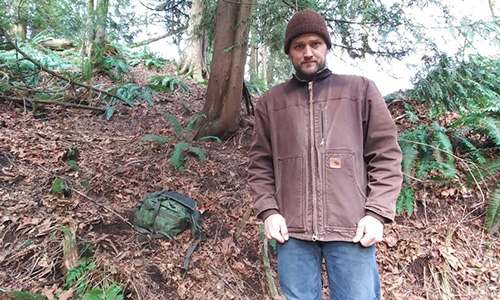
The above image is a good example. See how a simple brown Carhartt coat blends into the background as opposed to the blue jeans that I am wearing.
Related: How To Tan Hides With Egg
Also, note the sky in the background and how my shoulder is silhouetted against it. Even if I were wearing camouflage, my silhouette would betray me.
Blending In
Camouflage patterns work because they trick the eyes and disrupt the outline of our bodies. If we do not have access to commercially available camouflage, then we will have to improvise.
Tying natural materials to your hat, clothing, or gear is a great way to break up our silhouette.
This is a case where less may be more. We are not trying to mimic anything; we are only breaking up the outline of our body.
Hats
I like to wear a camouflage Boonie hat while out in the woods partly because it is straightforward to add natural camouflage to.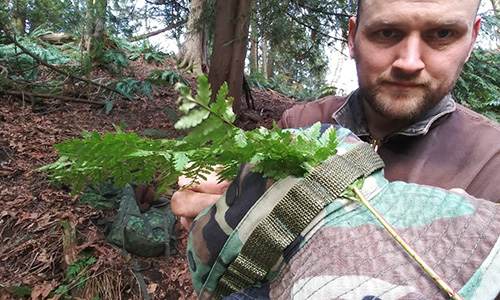
All you need to do is slip foliage from the surrounding area into the loops that run around the brim of the hat.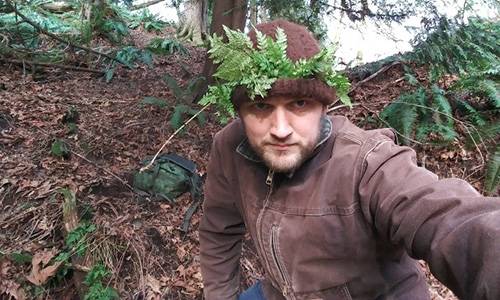
Touques are also pretty easy to camouflage as well. The section that is folded over forms a nice pocket that can hold foliage as well. The goal here is not to look like a bush but to break up the outline.
Face and Exposed Skin
All exposed skin should be covered with some camouflage. A camouflage face paint kit is ideal, but dirt and mud will also do the trick if you are doing without one.
Related: Camouflage and Concealment: The Art of Staying Hidden
Hands
I have found that the best way to camouflage your hands is to rub mud and dirt on their backs.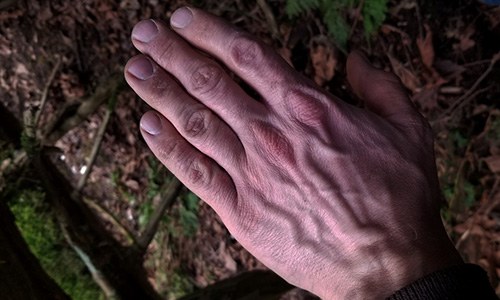
As you can see, clean hands stick out against the background of the forest.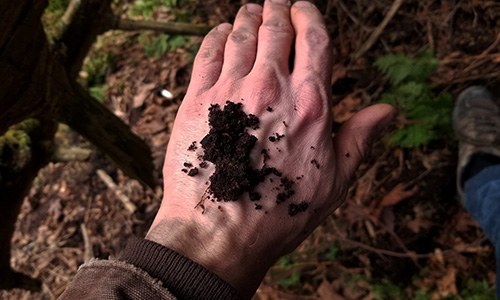
Pile a little bit of dirt or mud on the back of the hand and rub in, making sure to get good coverage.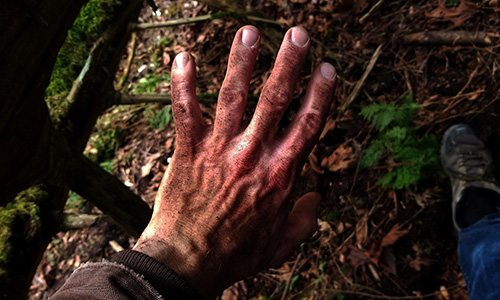
A little bit of dirt goes a long way to reduce the contrast between your skin and the forest.
Face
The best way to camouflage your face is with some camouflaged face paint. These usually come in green, brown, and black paint sets to help you blend into any environment.
We don’t always have the luxury of face paint, though.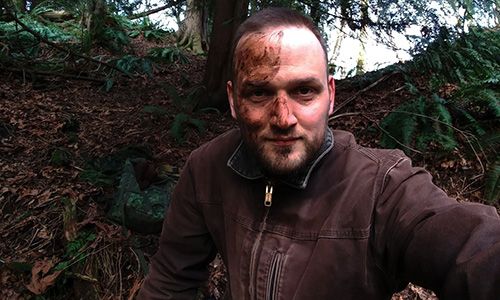
Smearing a small amount of dirt onto half of my face shows how much of a change using mud as face paint can make.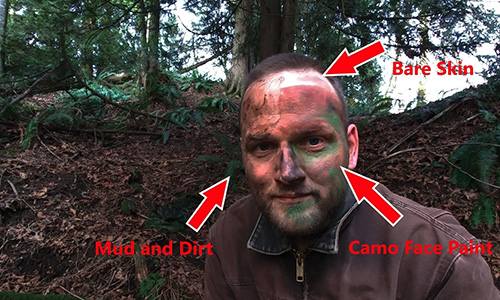
In this final example, you can see the difference between my bare skin, the mud, and the camouflage face paint.
While the face paint is the most effective, the dirt still does an admirable job of reducing shine, blending into the background colour, and matching nature’s texture.
Gear
Camouflaging gear is often a bit tricky. The best-case scenario is to sew burlap or cloth strips to your equipment in ways that do not interfere with that equipment’s operation.
Failing that, stick any foliage you can into loops or attachment points to assist in the gear blending into the environment.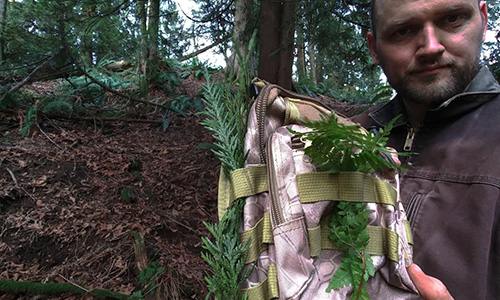
Helpful Options
We need not be unprepared to hide in a survival situation. Aside from carrying a face paint kit and having a way to cover up any bright colours, there are a few small, lightweight options that should be in your get-home bag, go bag, bugout bag, survival kits etc.
Sniper Veil
The sniper veil is a cotton mesh that can be a solid colour or a camouflage pattern.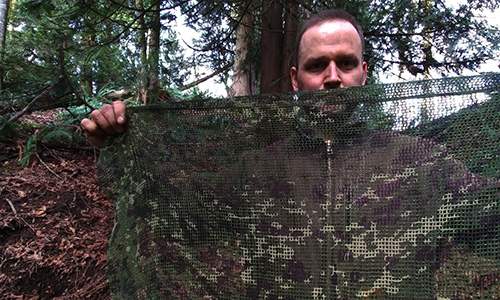
The advantage to carrying one of these is that it can be draped over your head, wrapped around your body or draped over gear.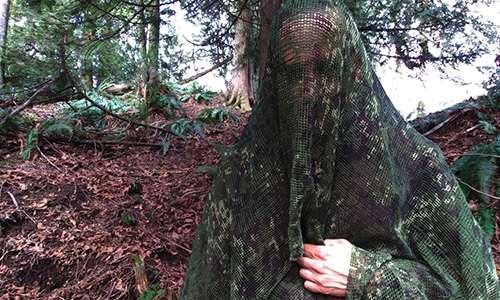
The Shemagh
Most, if not all, preppers and survivalists will have a shemagh or two lying around or stuffed into various kits.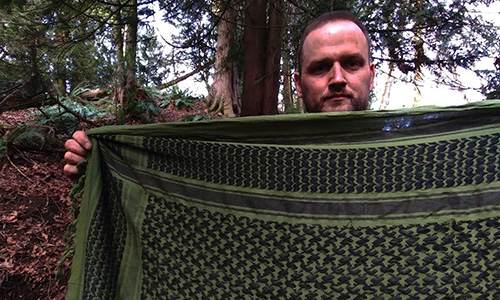
This simple piece of cotton has many uses that would be worthy of an article on its own, but in the case of cover and concealment, the shemagh can do a lot to cover those areas of your body that may stand out, especially the head and face.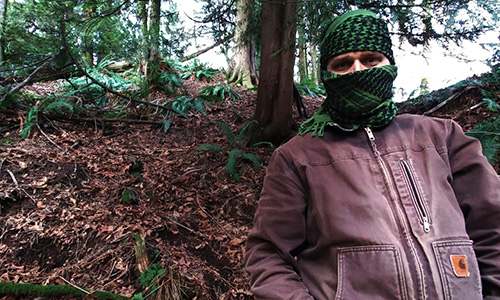
Camouflage is something that most species have evolved to use over millions of years. We are removed from the wilderness environment, and when thrown back into it, we lack the natural camouflage defence mechanisms that so many animals have.
Every environment is different, every situation unique and requires its own tactics. The most important thing is to remain adaptable and use your creativity and improvisation to disappear into the forest.

No comments:
Post a Comment